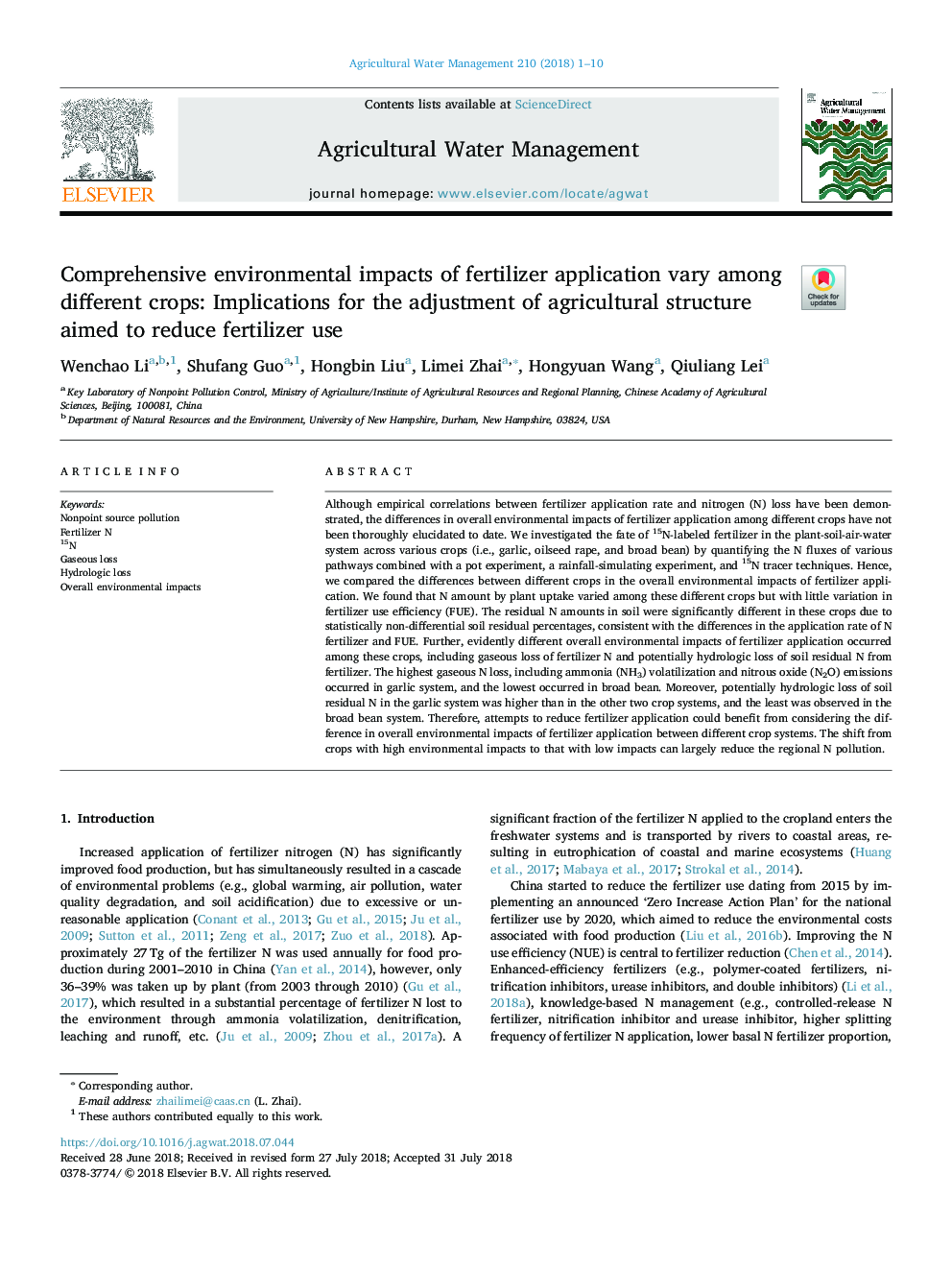| Article ID | Journal | Published Year | Pages | File Type |
|---|---|---|---|---|
| 8872696 | Agricultural Water Management | 2018 | 10 Pages |
Abstract
Although empirical correlations between fertilizer application rate and nitrogen (N) loss have been demonstrated, the differences in overall environmental impacts of fertilizer application among different crops have not been thoroughly elucidated to date. We investigated the fate of 15N-labeled fertilizer in the plant-soil-air-water system across various crops (i.e., garlic, oilseed rape, and broad bean) by quantifying the N fluxes of various pathways combined with a pot experiment, a rainfall-simulating experiment, and 15N tracer techniques. Hence, we compared the differences between different crops in the overall environmental impacts of fertilizer application. We found that N amount by plant uptake varied among these different crops but with little variation in fertilizer use efficiency (FUE). The residual N amounts in soil were significantly different in these crops due to statistically non-differential soil residual percentages, consistent with the differences in the application rate of N fertilizer and FUE. Further, evidently different overall environmental impacts of fertilizer application occurred among these crops, including gaseous loss of fertilizer N and potentially hydrologic loss of soil residual N from fertilizer. The highest gaseous N loss, including ammonia (NH3) volatilization and nitrous oxide (N2O) emissions occurred in garlic system, and the lowest occurred in broad bean. Moreover, potentially hydrologic loss of soil residual N in the garlic system was higher than in the other two crop systems, and the least was observed in the broad bean system. Therefore, attempts to reduce fertilizer application could benefit from considering the difference in overall environmental impacts of fertilizer application between different crop systems. The shift from crops with high environmental impacts to that with low impacts can largely reduce the regional N pollution.
Related Topics
Life Sciences
Agricultural and Biological Sciences
Agronomy and Crop Science
Authors
Wenchao Li, Shufang Guo, Hongbin Liu, Limei Zhai, Hongyuan Wang, Qiuliang Lei,
